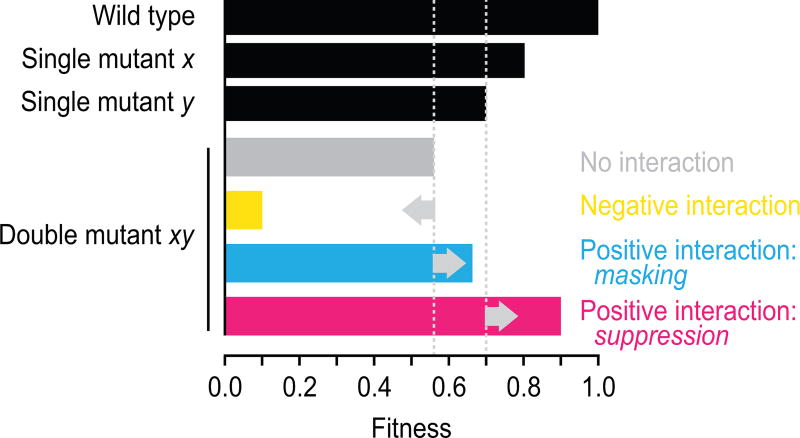Figure 1.
Genetic interaction classes. When two single mutants (x and y) have a relative fitness of 0.8 and 0.7, the expected fitness of the resultant double mutant (xy) based on a multiplicative model is 0.8 × 0.7 = 0.56. A negative genetic interaction, such as synthetic lethality, occurs when the observed double mutant fitness is lower than this expected fitness. A masking positive interaction occurs when the fitness of the double mutant is greater than expected, but lower or equal to that of the slowest growing single mutant. Suppression positive interactions occur when the double mutant fitness is greater than that of the slowest growing single mutant.

